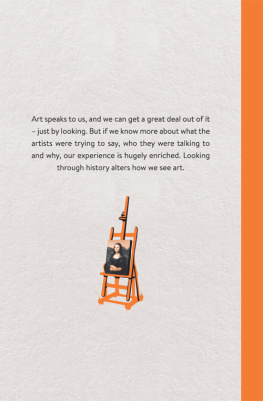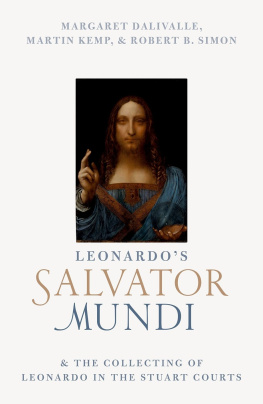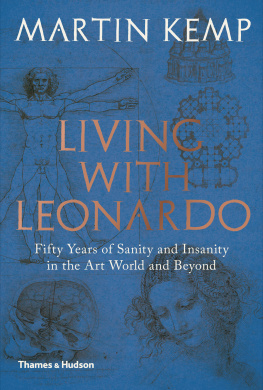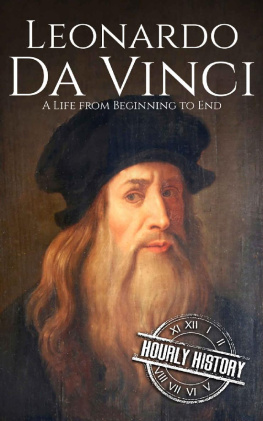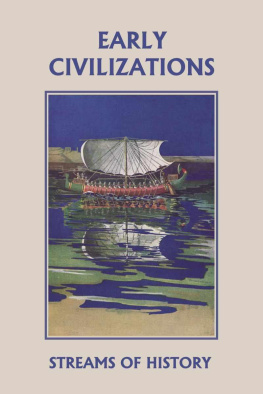
ALSO BY MARTIN KEMP
The Science of Art: Optical Themes in Western Art from Brunelleschi to Seurat
The Human Animal in Western Art and Science
Leonardo da Vinci: The marvellous works of nature and man
Leonardo
Christ to Coke: How image becomes icon

First published in Great Britain in 2014 by
PROFILE BOOKS LTD
3 Holford Yard
Bevin Way
London WC 1 X 9 HD
www.profilebooks.com
Text copyright Martin Kemp, 2014
Original illustrations Cognitive Media Ltd, 2014
COGNI+IVE
10 9 8 7 6 5 4 3 2 1
Designed by Jade Design
www.jadedesign.co.uk
Printed and bound in Italy by L.E.G.O. SpALavis (TN)
The moral right of the author has been asserted.
All rights reserved. Without limiting the rights under copyright reserved above, no part of this publication may be reproduced, stored or introduced into a retrieval system, or transmitted, in any form or by any means (electronic, mechanical, photocopying, recording or otherwise), without the prior written permission of both the copyright owner and the publisher of this book.
A CIP catalogue record for this book is available from the British Library.
ISBN 978 178125 3366
eISBN 978 178283 1020
Enhanced eBook ISBN 978 178 125 4110

The paper this book is printed on is certified by the 1996 Forest Stewardship Council A.C. (FSC). It is ancient-forest friendly. The printer holds FSC chain of custody SGS-COC-2061
CONTENTS
INTRODUCTION
ART IN HISTORY
The artists and works of art in this book have transformed how art affects us. Over the ages, painters and sculptors have invited us to do radically new things.
To take just one example, we do not know how the first viewers of Diego Velsquezs Las Meninas reacted to his mighty canvas, but we can be sure that they had seen nothing like it before. It is recognisable as a group portrait, but does not conform to the norm. The artist is there, but we see only a portion of the back of his painting. The young princess and her entourage have assembled in the grand room. But at whom are they looking? At someone more important than us, we imagine. The king and queen are visible in the mirror. But where are they? They are the absent subject of the picture. Velsquez, in common with other great artists, presents us with a field for interpretation in which we can all play our part.
Art in History concentrates on the triangular relationship between art, artist and spectator frequently in the context of God and nature. This is how the present book differs from the numerous previous histories of Western Art. It looks at the varied historical notions of art and artists as categories within which art is produced and consumed. What art required of the spectator and what the spectator required of art changed radically over the ages. We will see the artist emerge as an individual who makes a distinct contribution to the development of art in ancient Greece and again later in the Renaissance. Subsequent centuries witness the evolution of the categories until they assume their modern meanings. The developments often embody the idea of progress, a powerful concept in the forging of modern economic and political systems. Indeed, every aspect of the rise of art and artists is deeply involved in material and conceptual shifts in society.
In setting art in history, a big question looms into view: is the maker of artefacts a subservient agent or an autonomous hero of creativity? Or to frame more subtle questions: how far is the art work first and foremost an expression of a series of social imperatives; and how far does it depend on the direct and timeless communication of human values from one individual to another? Can it be both of these things? I will argue that the power of images depends on both, in a wholly integrated manner.
How a work of art is embedded in history varies as widely as the works and the artists vary. A medieval Madonna and Child is directly concerned with a kind of spiritual beauty that lies beyond this world, while Goyas painting of a contemporary massacre speaks of violent contention. What we call the style of the work is integral to its effect. The suave grace and high polish of the Madonna would not serve Goya well. The violent colour contrasts and incendiary brushwork of Goya would not exercise the right effect on a medieval worshipper. All the works here demonstrate a compelling unity of style and content. Each of them posits their own special relationship with the spectator in the context of the society from which they emerged, and they speak to us in a period voice. Although we can still hear them speak, we gain enormously from attuning our ears to their very varied accents.
We will be encountering our key works in a broadly chronological order, because what each artist does is articulated in relation to what went before, and affects our view of the past. As the great poet T. S. Eliot wrote in 1921, what happens when a new work of art is created is something that happens simultaneously to all the works of art which preceded it.
Until comparatively recently, works of art that have emerged from the changing frameworks tell the story of big blokes whether artists or their funders and play to what is a familiar story of canonical masterpieces that stood at the centre of new developments in European and North American art. There are of course other stories, but the narrative I follow, looking at European and North American art, is a real and massive one, not least in terms of where the international art world is now, in China no less than in the USA. It is also the story that I am best equipped to tell but I dont claim that it is definitely what the history of art is about. As one of the possible stories, not the least of its attractions is its focus on some of the most enriching works human beings have produced. It is also closely related to what we experience when we step into major galleries and museums.
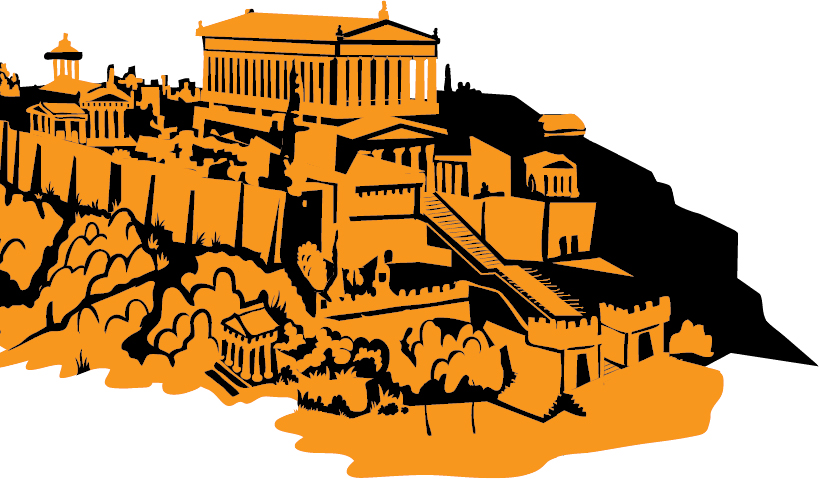
1
THE PROGRESS OF ART IN GREECE AND ROME
From the Natural History , c . 79 AD, by the Roman soldier and natural philosopher, Pliny the Elder:
Successive painters quest for nature and beauty
Apollodorus of Athens, in the ninety-third Olympiad [408 BC] was the first to imitate the appearance of objects, and the first who truly conferred glory on the painters brush The gates of art now being thrown open, Zeuxis of Heraclea entered in the fourth year of the ninety-fifth Olympiad, truly destined to lead the brush to the greatest levels of glory
Parrhasius of Ephesus also greatly carried things forward, being the first to use proportions in his figures, the first to give animation to faces, elegance to the hair, and beauty to the mouth, and it is recognised by artists that he carried away the palm for contour lines. In painting this is the very highest subtlety. To be able to create the boundaries and round them off is successfully achieved in art only rarely
As to Timanthes, he was plentifully gifted with genius [ingenium] , and some of the orators have with praise celebrated his Iphigenia, as she stands fatefully at the altar. He painted the grief of all present, and in particular her uncle; but having exhausted all the images of sorrow, he veiled the features of the victims father, unable adequately to represent his feelings Timanthes is the only one in whose works something more is always conveyed than is actually painted.
Next page
